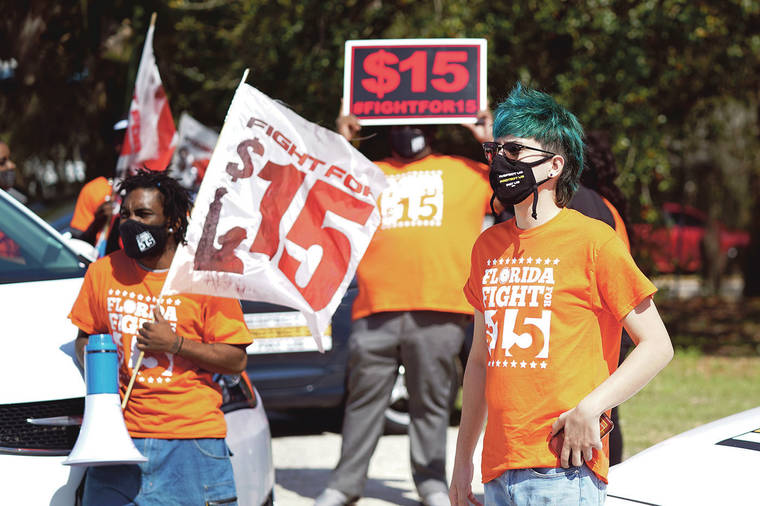WASHINGTON — President Joe Biden’s effort to raise the federal minimum wage to $15 an hour could provide a welcome opportunity for someone like Cristian Cardona, a 21-year-old fast food worker. Cardona would love to earn enough to afford to move out of his parents’ house in Orlando, Florida, and maybe scrape together money for college.
More than 1,000 miles away in Detroit, Nya Marshall worries that a $15 minimum wage would drive up her labor costs and perhaps force her to close her 2-year-old restaurant, already under strain from the viral pandemic.
Between Cardona’s hope and Marshall’s fear lies a roiling public debate, one with enormous consequences for American workers and businesses. Will the Biden administration succeed in enacting a much higher federal minimum wage — and should it? Economists have argued the merits of minimum wage hikes for years.
“The mother of all economic debates” is how economists Michael Feroli and Daniel Silver of JPMorgan Chase describe it.
The administration has cast its campaign to raise the minimum as a way to lift up millions of the working poor, reduce America’s vast financial inequality and help boost the economy.
“No American should work full time and live in poverty,” said Rosemary Boeglin, a White House spokeswoman. “Research has shown that raising the minimum wage reduces poverty and has positive economic benefits for workers, their families, their communities, and local businesses where they spend those additional dollars.”
Yet just this month, the nonpartisan Congressional Budget Office estimated that while raising the minimum wage to $15 by 2025 would increase pay for 17 million people and pull 900,000 out of poverty, it would also end 1.4 million jobs. The reasoning is that employers would cut jobs to make up for their higher labor costs.
The fate of Biden’s minimum wage proposal remains hazy. Facing resistance in Congress, the president has acknowledged that he will likely have to omit the measure from the $1.9 trillion COVID-19 financial relief package he is proposing and re-introduce it later as a separate bill.
For years, there was almost no debate at all about a minimum wage. Classical economists had standard advice on imposing or raising minimum wages: Don’t. Piling higher labor costs on employers, the thinking went, would force them to cut jobs and end up hurting the very low-wage workers the minimum wage was intended to help.
But groundbreaking research in the 1990s suggested that the Econ 101 version was simplistic at best. Now there is growing confidence among economists — though far from a consensus — that lawmakers can mandate sharp increases in the minimum wage without killing large numbers of jobs.
Assessing Biden’s $15 plan, for instance, economists at Morgan Stanley have concluded that “the impact to employment, positive or negative, would be minimal, while the social benefits to lifting real wages of lower-income earners and millions out of poverty are substantial.”
Raising the minimum wage, they said, would also help narrow the chronic economic gap between white Americans on the one hand and Black and Hispanic Americans on the other.
The federal government introduced a minimum wage to a Depression-scarred country in 1938.
Though Congress has raised the minimum over time, it hasn’t done so for more than 11 years — the longest gap between increases.
Adjusted for inflation, $7.25 in 2009 dollars would be about $8.80 now. Twenty-nine states and Washington, D.C., have already adopted minimum wages above the federal $7.25.
The United States lags behind other developed countries in the size of its minimum wage. In 2018, the U.S. minimum amounted to 33% of the nation’s median earnings — dead-last among 31 countries in the Organization for Economic Cooperation and Development.



